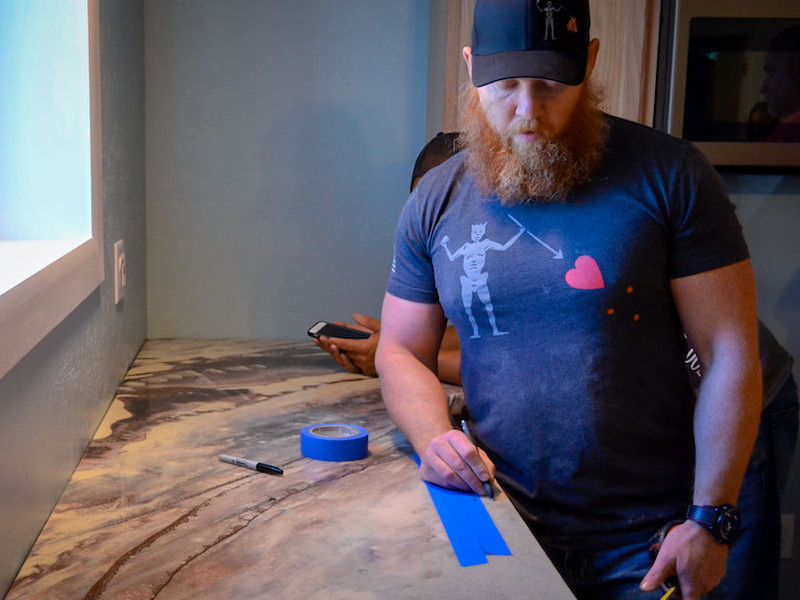For many DIYers, the first time they resurface their countertops with epoxy they can run into easily avoidable issues. Our technical support team has come up with the 5 most common mistakes made during epoxy countertop installations and how to avoid them.
Ultimately, the best advice we can give you is to follow the instructions, and to ask as many questions as possible! We are here to make sure your project goes well!
Here are the 5 most common mistakes DIYers make when installing epoxy countertops:

1. Pouring Under 70 Degrees
The temperature of the room, surface, and the epoxy is one of the most important aspects of installing an epoxy countertop. The room and surface that you are resurfacing must be between 70-74 degrees. Any colder temperature will make for a "soft" countertop that is not durable at all! To achieve this, you will need to bring your room and epoxy to 70-74 degrees, for 2-3 days before you pour. Once you have poured, it is important to maintain this temperature for another 24 hours to allow for the countertop to cure properly.

2. Not Taking Enough Time to Mix
The second most common mistake that a first time epoxy DIYer can make, is during the mixing process. We recommend mixing for three minutes in one container, and then switching to a secondary container for three minutes. This total 6 minutes of mixing time is with a paint stick and not a drill paddle, because a drill paddle can incorporate bubbles into your mixture. The lengthy mixing time and the switching buckets prevents unmixed resin on your countertop. If you have resin clumps in your countertop, they will never cure, leaving an eternal sticky spot! Never fear, there is a solution for this, you can pour a clear epoxy flood coat over the top of the countertop to seal the stickiness.

3. Improper Measurement
For countertop epoxy, the ratio is 1:1. If you're mixing smaller amounts of epoxy, it's important that you get the ratio correct for a durable finished surface. Visit your local Lowe's or Home Depot, either of these stores will have one gallon buckets with measurement markers on the sides for easy measuring of the epoxy.

4. Miscalculated Epoxy Amounts
One gallon of Premium FX Poxy covers up to 20 square feet at 1/8 inch thickness. Our epoxy does try to self level at this thickness, and if you try to spread it thinner than this, you can experience divots (otherwise known as fish eyes) in the surface. Carefully measure out the square footage you're resurfacing, and when possible, order enough to be able to apply a clear coat after you apply your color base. This way, if you have any divots from spreading the product too thin, you can re-coat the countertop with the clear epoxy to fill in those imperfections.

5. Surface Preparation
Whether you are going over tile, laminate, granite, or concrete, you will need to prepare your surface. This extra preparation makes sure that you have a smooth and glossy finished product to be proud of. For tile, you will need to fill in the grout lines to create a level smooth surface. Just use clear epoxy as a skim coat, to fill in the grout lines. For this process one quart of epoxy will cover up to 60 square feet. Apply the product with a squeegee and allow the product to build up in the low spots. You an apply a skim coat every six hours, and it might take two before you are level and ready for a flood coat!
For wood, concrete, or any other porous surface, you will want to seal the surface so that air cannot travel through it and cause bubbles in your epoxy countertop. Just apply 1-2 skim coats as you would with the tile countertop. A sealed countertop doesn't look shiny, you want the surface to just look wet.
These are the 5 most common mistakes that you can easily avoid with your installation. With a few simple precautions, you can create a stunning countertop on your first try. Just be careful to follow the directions! If something does go wrong, don't hesitate to give us a call at 970.639.9338. We have the friendliest, most experienced staff in the industry. Our office is open Monday through Friday, 7am-7pm MST.

